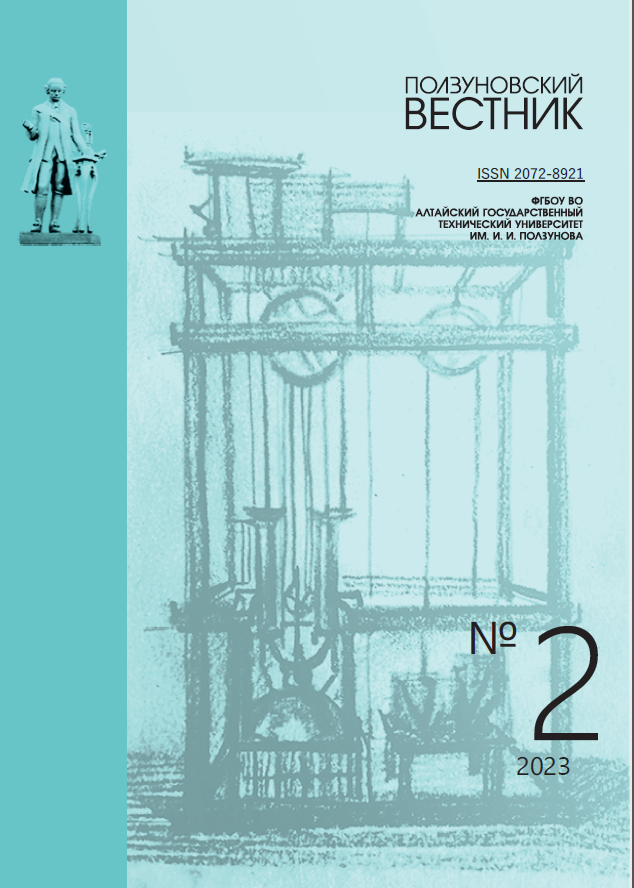БИОКАТАЛИТИЧЕСКИЙ СПОСОБ ИЗВЛЕЧЕНИЯ ЖИРОВ ИЗ НЕТРАДИЦИОННОГО СЫРЬЯ
DOI:
https://doi.org/10.25712/ASTU.2072-8921.2023.02.013Ключевые слова:
жир медведя, биокаталитический способ, вытопка жира, ферменты, нетрадиционное сырьеАннотация
Поиск альтернативного сырья животного происхождения, полученного от зимоспящих животных охотничьего промысла путем лицензированной добычи, с целью выделения из него жиров, имеющих в своем составе значительное количество эссенциальных жирных кислот и обладающих благодаря этому высокой биологической ценностью и фармакологическим эффектом, является актуальным. Жиры млекопитающих, таких как речной бобр (лат. Castor fiber), барсук обыкновенный (лат. Meles meles), сурок (лат. Marmota) и бурый медведь (лат. Ursus arctos), обитающих на территории Западной Сибири, нашли свое применение в нетрадиционной медицине много веков назад благодаря уникальному составу. Известные на сегодняшний день методы извлечения жиров из сырья животного происхождения можно классифицировать по способу теплового воздействия на «сухие» и «мокрые». Обе группы методов имеют преимущества и недостатки, основным из которых является невысокий выход жира и значительная потеря ценных жирных кислот в результате окислительных процессов и адсорбции шкварой. При переработке незначительного количества ценного и дорогостоящего сырья охотничьего промысла необходим поиск способов максимально полного извлечения биологический активных компонентов из него. В настоящее время перспективным является использование биокаталитических способов воздействия на сырье с использованием современных ферментных препаратов направленного действия. Жировая ткань животных в большинстве своем представляет собой липидный комплекс, однако содержит и некоторое количество белковых веществ, прежде всего соединительных, таких как коллаген и эластин, которые, в результате температурного воздействия в процессе извлечения жира денатурируют и таким образом препятствуют отделению жира от шквары.
Библиографические ссылки
Богачев А.С., Богачев С.А.. О сырье народной медицины – желчи, пантах, жирах и другом: Уссурийск, 1993. 113 с.
Schwab C, Cristescu B, Northrup JM, Stenhouse GB, Gänzle M. Diet and environment shape fecal bacterial microbiota composition and enteric pathogen load of grizzly bears. PLoS One. 2011;6(12):e27905. doi: 10.1371/journal.pone.0027905. Epub 2011 Dec 15. PMID: 22194798; PMCID: PMC3240615.
Гигиенические требования безопас-ности и пищевой ценности пищевых продук-тов СанПиН 2.3.2.1078-01. Режим доступа: https://docs.cntd.ru/document/901806306; сво-бодный. загл. с экрана.
Ветеринарно-санитарные требования "Правила ветеринарного осмотра убойных животных и ветеринарно-санитарной экспер-тизы мяса и мясных продуктов". Режим досту-па:https://fsvps.gov.ru/ru/fsvps/laws/1107.html; свободный. загл. с экрана.
ГОСТ 25292-2017. Библиографическая ссылка. Жиры животные топленые пищевые. Технические условия: введ. 2019-01-01. Москва, 2019, 18 с.
Загрузки
Опубликован
Как цитировать
Выпуск
Раздел
Лицензия
Copyright (c) 2023 Елена Александровна Вечтомова, Александр Юрьевич Просеков, Оксана Васильевна Козлова, Мария Михайловна Орлова

Это произведение доступно по лицензии Creative Commons «Attribution» («Атрибуция») 4.0 Всемирная.
















 .
. Контент доступен под лицензией
Контент доступен под лицензией 
